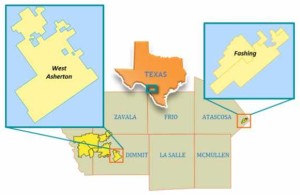Swift Energy has seen its well costs fall and its initial production (IP) rates rise in 2013. Across two areas in South Texas, the company's IP rates are up 15% or more and drilling and completion costs are down 13% or more.
That's exactly what operators want to see and its why several companies are selling assets to fund accelerated development programs in the Eagle Ford.
Swift is selling assets in Louisiana and just last week Forest Oil sold assets in the Panhandle to fund its Eagle Ford operations.
Eagle Ford Drilling & Completion Costs Down
In the past year, Swift has driven drilling costs down from more than $4 million to a little more than $3 million. Simultaneously, completion costs have been falling. Since early 2011, completion costs have fallen from $5.3 million to $3.6 million.
Together, those two metrics equate to a savings of 13% or more from last year at this time for the average Eagle Ford well Swift drills and completes.
Watch For More Activity In 2014 From Eagle Ford Operators
Most companies have not released their plans for 2014, but we're starting to hear several major operators will be increasing activity next year. Stories like this one from Swift and $100 oil make the Eagle Ford more attractive than ever.






